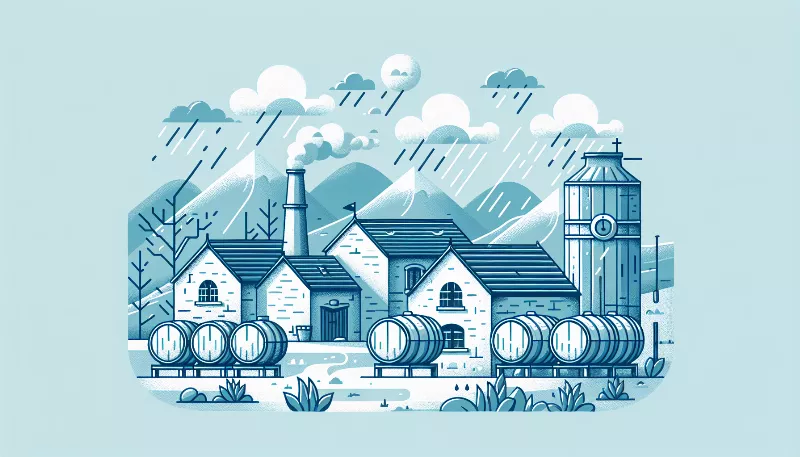What is the role of the Scottish climate in the aging process of Scotch whisky?
Discover how Scotland's unique climate intricately shapes the aging of Scotch whisky, imparting distinct flavors and character. Dive into the whisky world!

The Mystical Dance of Whisky and Weather
Imagine a land where misty moors meet rugged coastlines, and ancient castles stand sentinel over wild landscapes. This is Scotland, a place where the very air seems infused with magic and mystery. It's here, in this enchanting realm, that Scotch whisky – the 'water of life' – embarks on its journey to greatness. But what role does the capricious Scottish climate play in the aging process of this beloved spirit? Let's dive into the heart of the matter with the same passion that fuels the fiery sip of a well-aged single malt.
The Breath of the Highlands: Temperature and Maturation
In the world of whisky, aging is not just a process; it's an art form. The Scottish climate, known for its cool temperatures, plays the maestro in this symphony of flavors. Unlike the sweltering heat found in some spirit-producing regions, Scotland's cooler climate ensures a slow and steady maturation process. This gradual interaction between the oak casks and the liquid gold within allows for the development of complex flavors without the risk of over-extraction that warmer climates might pose. The result? A whisky that's as smooth and deep as a loch, with layers of flavor waiting to be discovered.
Humidity's Embrace: The Angel's Share
As whisky ages, a portion of it evaporates through the porous oak barrels – a phenomenon affectionately known as the 'angel's share.' In Scotland, the relatively high humidity plays a crucial role in this process. It encourages a higher rate of alcohol evaporation compared to water, leading to a reduction in the whisky's alcoholic strength over time but also concentrating its flavors. The angels are indeed generous in Scotland, leaving behind a spirit that's rich and full-bodied, with a character shaped by the very skies above.
Seasonal Whispers: The Impact of Changing Climates
The Scottish weather is nothing if not dramatic, with each season singing a different tune. The cold winters and mild summers offer a dynamic environment for whisky casks, causing them to expand and contract. This natural ebb and flow allow the whisky to breathe in the essence of the wood, absorbing the subtle notes of vanilla, spice, and toffee that oak is known for. The changing seasons thus waltz with the whisky, imparting a depth and complexity that can only be achieved through the passage of time under the watchful eye of the Scottish climate.
Coastal Whispers and Peated Peaks
Scotland's diverse geography means that the climate can vary dramatically from region to region, and this local variation adds another layer to the story of Scotch whisky. Coastal distilleries benefit from the salty sea air, which can imbue the whisky with a gentle maritime quality. Meanwhile, in the peat-rich areas, the damp, earthy climate helps to preserve the peat used in malting, giving those whiskies their distinctive smoky flavor. Each locale's unique climate contributes to the singular taste profile of the whisky produced there, making every sip a testament to its homeland.
Conclusion: The Alchemy of Air and Spirit
In conclusion, the Scottish climate is not just a backdrop for the production of Scotch whisky; it's an essential character in its story. From the slow dance of temperature and maturation to the embrace of humidity and the whispers of the seasons, the climate shapes every drop of this noble spirit. So, the next time you raise a glass of Scotch, remember that you're not just tasting whisky – you're savoring the very essence of Scotland itself, distilled through time and tendered by the elements. Slàinte mhath!










